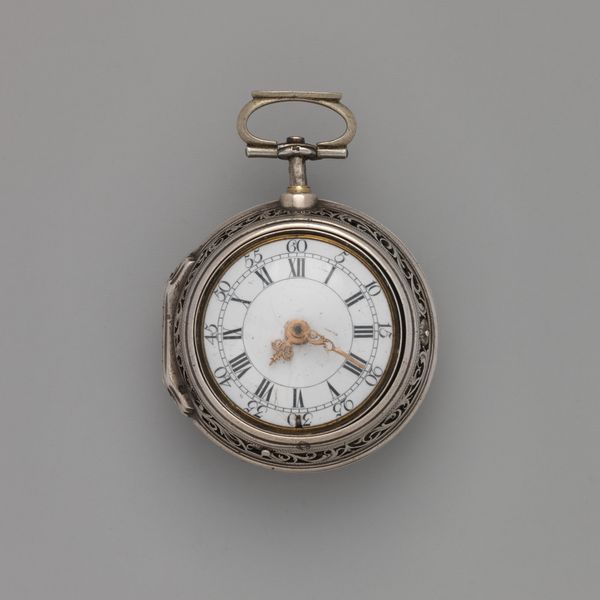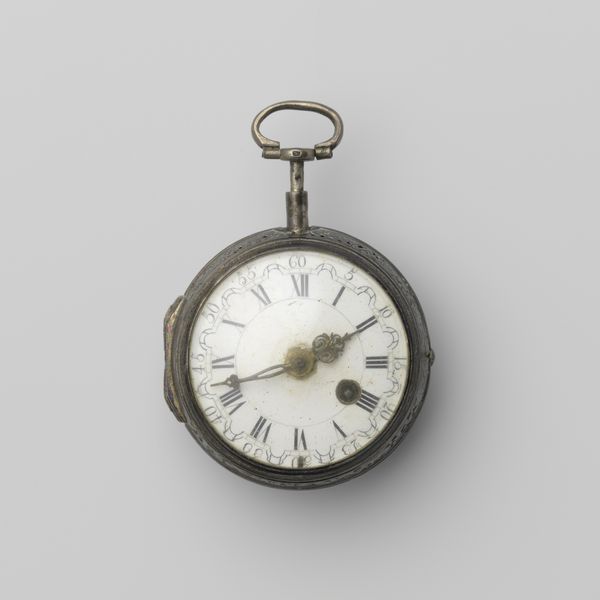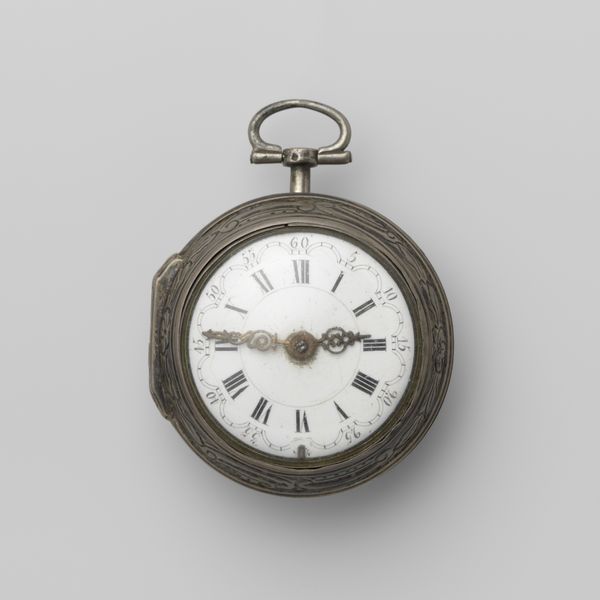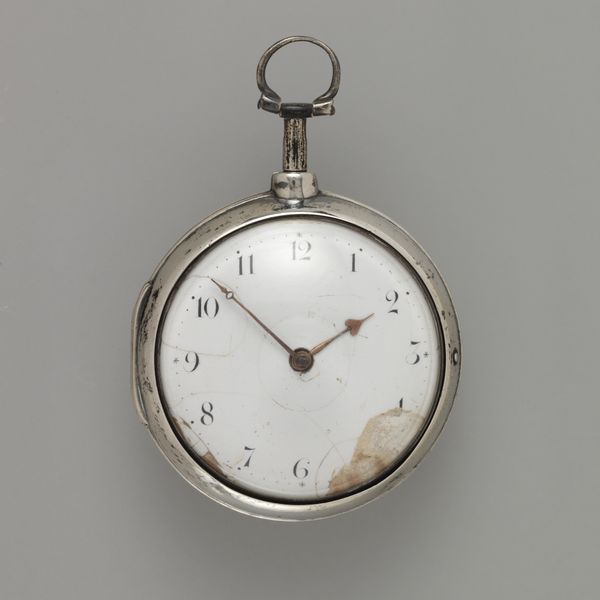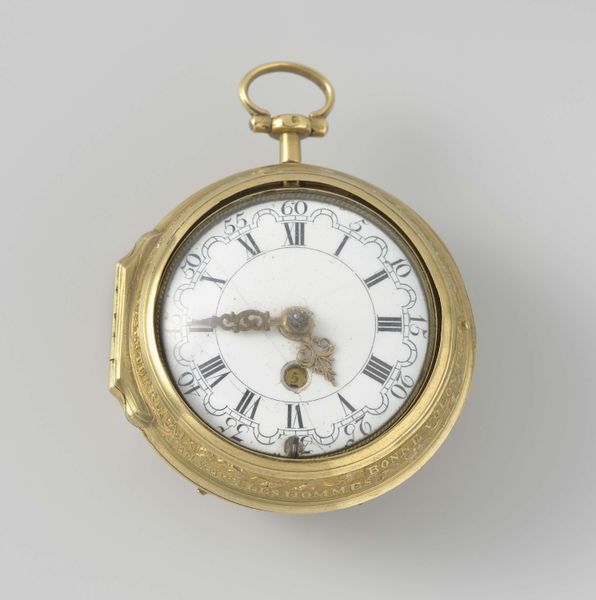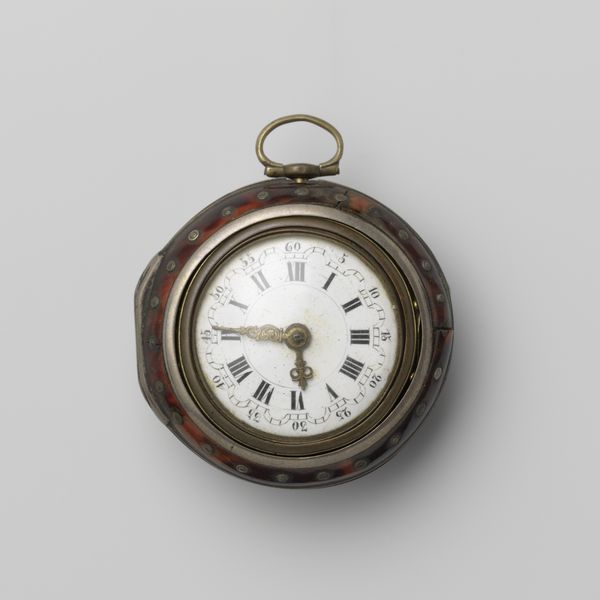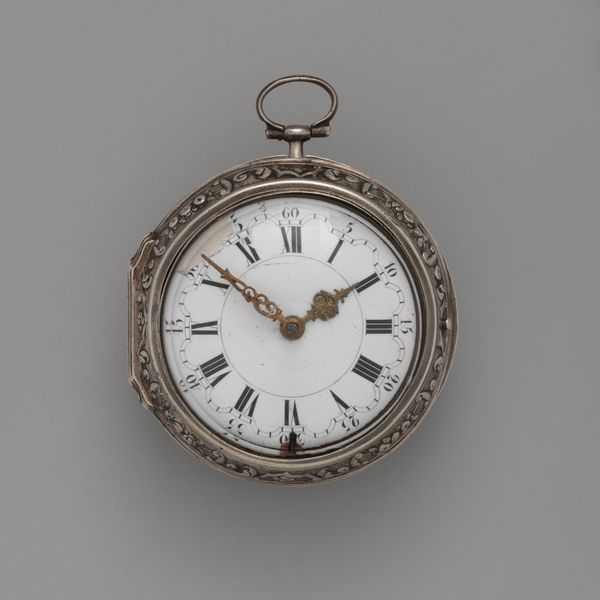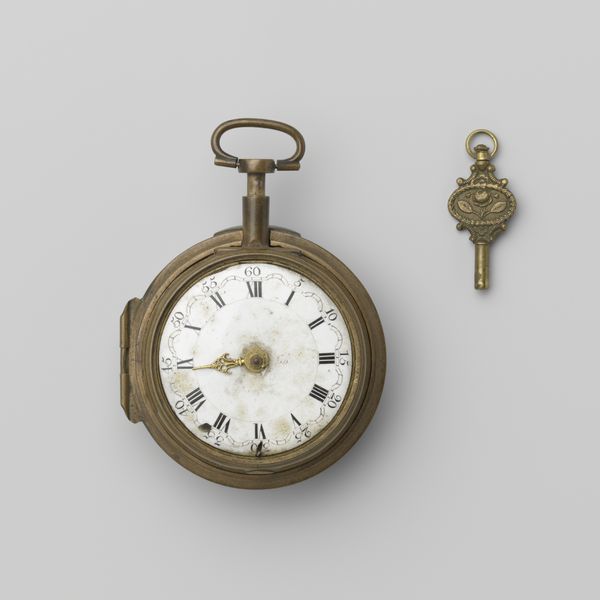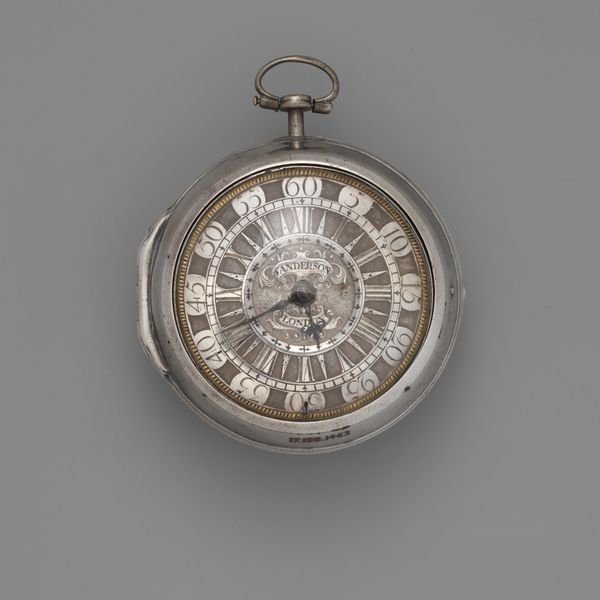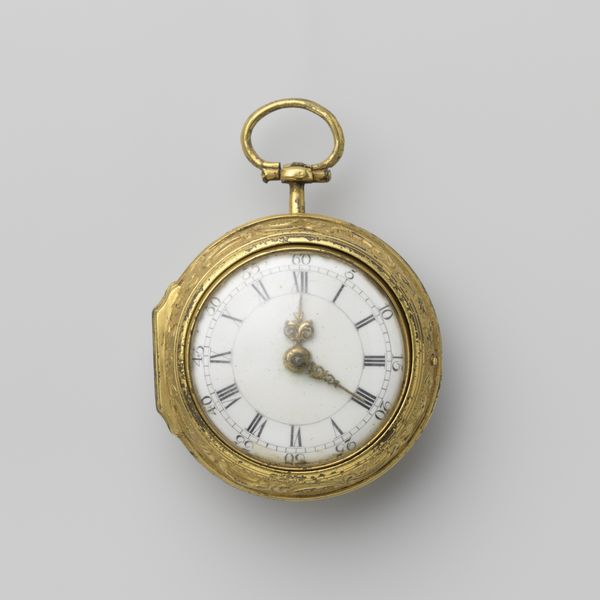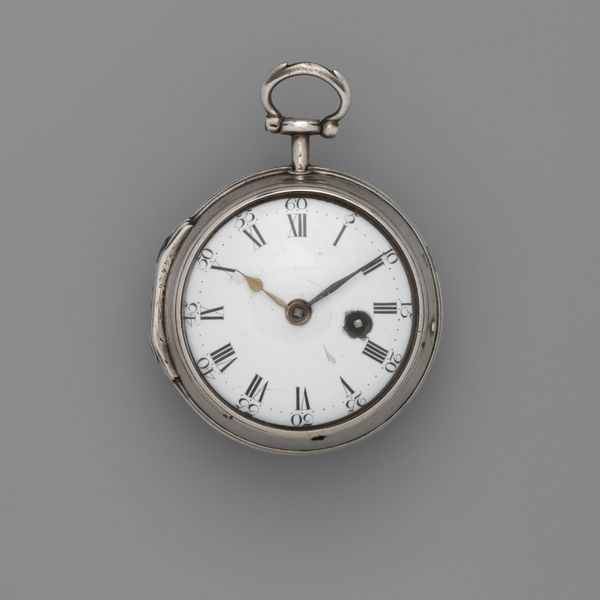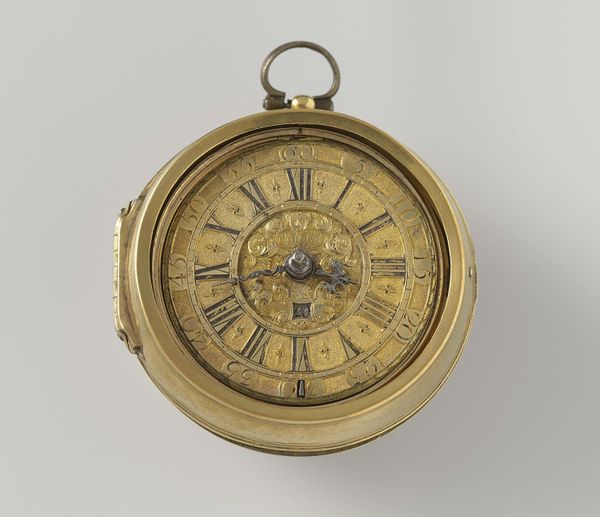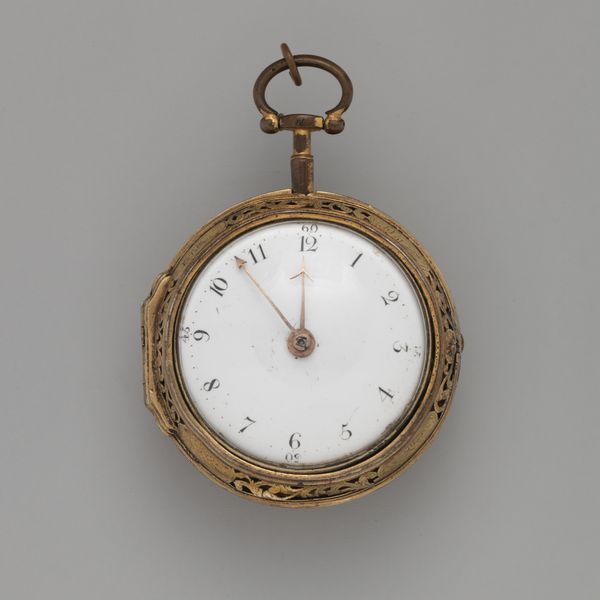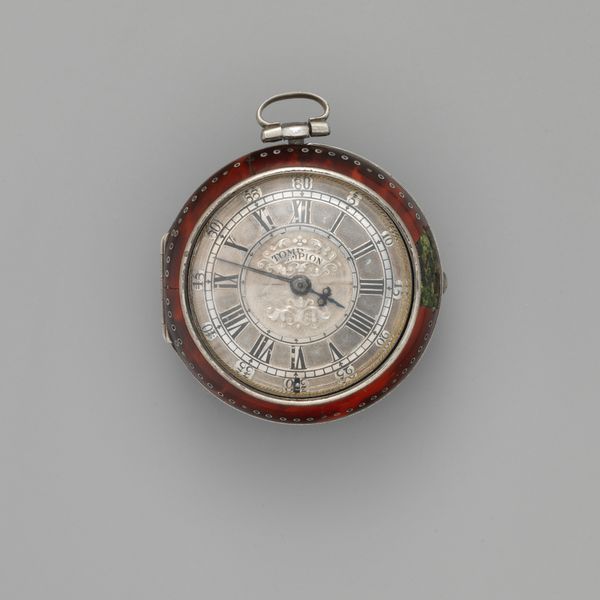
metal, ceramic, sculpture
#
neoclassicism
#
metal
#
ceramic
#
sculpture
#
decorative-art
#
miniature
Dimensions: Overall (with bail, confirmed): 1 7/8 × 1 7/16 × 5/8 in. (4.7 × 3.7 × 1.5 cm)
Copyright: Public Domain
Editor: Here we have a pocket watch dating back to between 1800 and 1815, residing here at the Metropolitan Museum of Art. It is a fascinating little sculpture rendered in metal and ceramic, very decorative. There is a certain innocence, perhaps naive feeling to this object...what do you see in it? Curator: I see a powerful little document loaded with social information. Pocket watches like these weren't just time-telling devices, they were signifiers of status and membership. The decorative-arts elements point to a society concerned with refinement, but also with broadcasting privilege. Who has time to tell? Who can afford such luxuries? Editor: So you are saying its function went beyond just tracking the hours? Curator: Absolutely! Consider its place in a time when industrialization was shifting the landscape. Time became currency and tools like this were used, in ways large and small, to solidify the class divides. How could the growing merchant class showcase themselves? Emulating aristocratic design was common and served as more than adornment. Editor: So, it almost represents an entire class struggle? Is it really that simple? Curator: Not simple, just representative. Everyday objects became silent megaphones through design. This ‘toy watch’ encapsulates the power dynamics inherent in the transition to a more rigid concept of work, leisure, and how that influenced identity in that specific moment in time. What did it reveal for you? Editor: I now realize that everyday things can teach you much about social issues if you look for it. I was focused on beauty; I failed to analyze what power it holds as a public object.
Comments
No comments
Be the first to comment and join the conversation on the ultimate creative platform.
